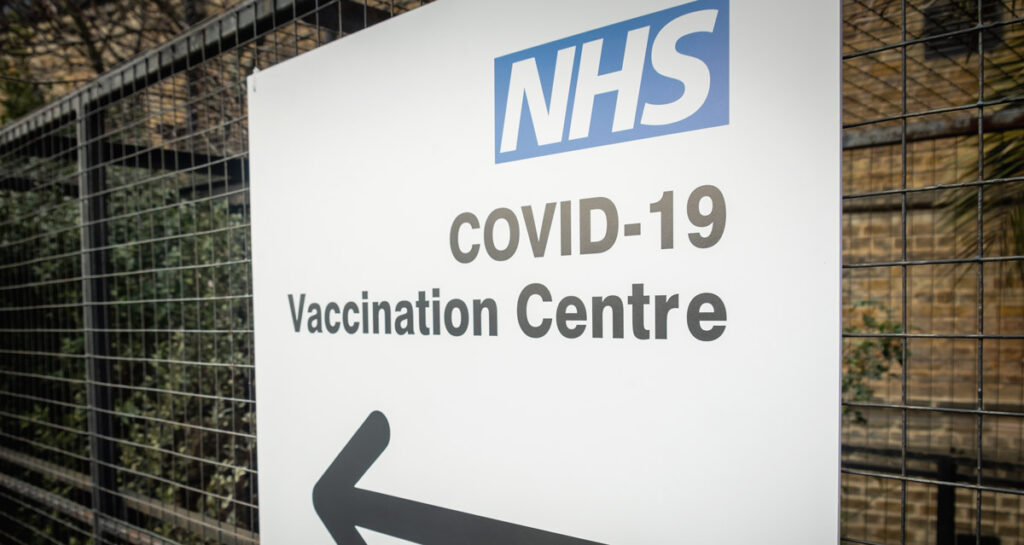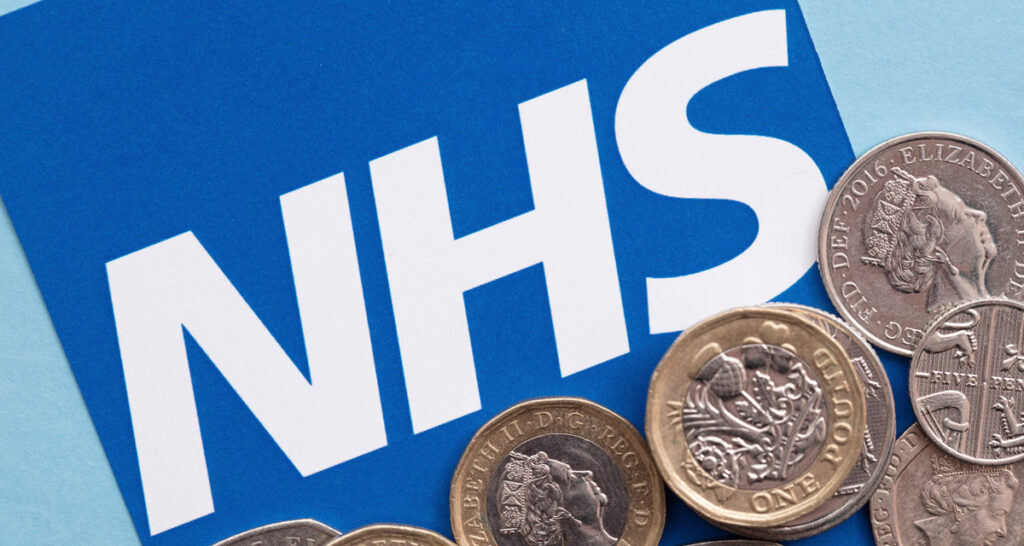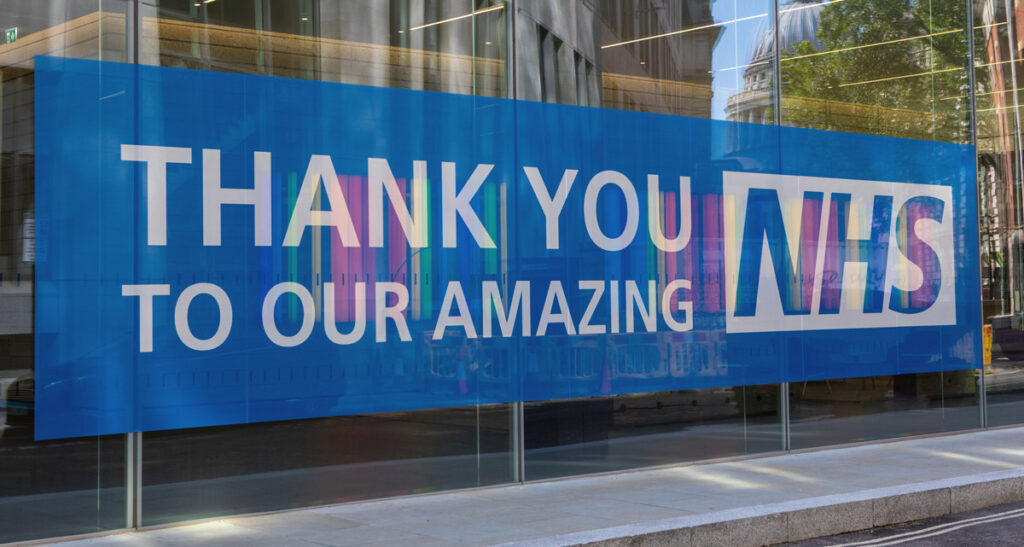Millions are still struggling to register with an NHS dentist following COVID-19. Private dental treatment needs to be made a viable alternative to help people access the treatment they need.

“From this evening, I must give the British people a very simple instruction – you must stay at home.”
These were the words of our then-Prime Minister, Boris Johnson, on 23rd March 2020.
The impact of the coronavirus on NHS dental treatment and services was crushing. Routine dental care had been suspended during the first lockdown but, even after being able to resume this as of June 2020, treatment levels did not return to what they had been pre-lockdown. As the world started to get back to normal, patients found themselves needing to make an appointment at a dental practice, only to find they were unable to register as a new NHS patient.
This then presented a choice: try to find somewhere accepting new patients, wait and hope that all was fine or that any problem that was presenting itself wasn’t serious or, as a last resort, seek private treatment options. The problem there is that private dental services cost significantly more in comparison to NHS dental costs, making this a barrier that most would likely be unable to get over without damaging their finances.
Fast forward to 2025 and, despite the fact there hasn’t been a lockdown since July 2021, NHS dentistry has not recovered. Challenges from the pandemic have combined with additional challenges that have occurred since and contributed to the continued struggle to access NHS treatment. This is where private dentistry needs to adapt and put measures in place to give patients the option to choose private care and pay for it in a way that suits them.
Jump to
Problem: NHS dentistry is struggling to meet demand
A reduction in NHS procedures being performed
The solution: Private dentistry needs to be made more accessible
Method 1: Financing and payment plans
Method 2: Dental insurance and practice membership plans
The NHS: public-funded healthcare for all?
As children, many of us will have been taught that we only have one set of teeth, so we need to look after them. But, even if we do as adults, it doesn’t mean that we don’t need a little bit of help with this every now and then.
Following the National Health Service Act in 1946, the NHS began offering its services in 1948. It was based on the principles of being comprehensive, without charge, and that services offered would be based on individuals’ clinical needs. Dentistry has been part of the NHS since its inception and, like medical care, was initially free of charge to all. However, demand for the service was overwhelming, and it soon experienced financial strain.
Charges were therefore introduced in 1951 and split into three bands, with band 1 covering the most minor treatments and band 3 the most complex. Whilst today’s NHS dental costs are not the same as they were back in 1951 (they generally increase every April), this is still a fraction of the treatment costs that private patients pay.
The NHS is able to offer its services thanks to the funding it receives from the public via taxes. This funding also helps the NHS educate and train its future workforce, including dentists. Given this, it’s only fair that the public should expect a level of access to NHS dentistry in return for the investment they have made over their working life. It is clear that these expectations are not being met though.

Where the NHS is failing patients, private dentistry is seeing an uptake in its services as people are not able or wanting to wait to get the treatment they need. However, private dental treatment incurs a significant cost, one that often needs to be paid upfront, that not everyone is in a financial position to be able to pay. This is especially true for those who rely on free NHS dental treatment to help them maintain their oral health or those in need of urgent treatment who had no prior warning and, therefore, could not save to pay for private care.
In this piece, we’ll look into some of the major factors that have affected NHS dentistry in recent years. As well as Covid-19, issues like Brexit, the number of dentists offering NHS dental treatment, and even the current cost of living crisis have also impacted the NHS, affecting adults and children alike. We’ll then explore ways that private dental practices can make their services more accessible to patients until the NHS is able to operate more efficiently once again. From financing and payment plans, to membership plans and a willingness to be flexible for certain groups, private dentists could potentially really help patients in their time of need.
The problem: NHS Dentistry is struggling to meet demand
NHS dentistry is facing significant challenges when it comes to meeting the currently overwhelming demand for services. This has led to many patients across England feeling concerned about their oral health, and highlights the need for urgent action and sustainable solutions.

The impact of Covid-19
Data on the number of courses of treatment delivered in England between the financial years of 2019-20 and 2023-24 suggests that they were affected significantly by the COVID-19 pandemic once restrictions came into place in March 2020. It also indicates that they have not yet got back to the level that they were before the pandemic.
| 2019-2020 | 2020-2021 | 2021-2022 | 2022-2023 | 2023-2024 |
| 38.8 million | 12.3 million | 26.8 million | 32.7 million | 34.1 million |
During the pandemic
Routine NHS preventative care and treatments were suspended by the government once the first lockdown was announced in March 2020, and face-to-face urgent care was restricted. Dentists were able to offer urgent advice and remotely prescribe antibiotics, but this wasn’t always enough. Those deemed as needing further treatment were triaged to urgent dental care centres either through their own dentist or NHS 111. However, not everyone who needed care received an appointment, leading to so-called “DIY dentistry” efforts by patients; amongst the most extreme were patients removing their own teeth.
On 8th June 2020, dental practices were able to resume care. Guidance from NHS England outlined PPE and infection control requirements, and practices had to manage risk and prioritise patients before they were able to fully restore their services. Aerosol-generating procedures, like high-speed drilling, were allowed if strict safety measures were followed.
A second national lockdown was announced on 31st October 2020 in England. There was initial confusion as to whether dental services would be able to continue operating, but this was quickly confirmed to be the case a couple of days later. The British Dental Association urged patients to seek treatment if they needed it, but they were unimpressed with the communication they received from the government.
Despite the fact dentists were permitted to open, services remained well below their pre-pandemic levels. The British Dental Association warned that the Covid-19 restrictions in place massively reduced capacity. Social distancing and fallow time after aerosol-generating procedures were also significant barriers to dental care. A survey by the Faculty of Dental Surgery discovered that most dentists saw far fewer patients each session, and many were concerned about when they would be able to resume full services. Financial pressures also increased, particularly for private practices, with some struggling to remain open due to reduced patient numbers but not reduced overhead costs.
After the pandemic
Whilst dentists were not able to operate at their pre-pandemic capacity, it was estimated that a year’s worth of dentistry was lost, creating a huge backlog of appointments. Not only that, but since patients had not been able to see a dentist for a while, they were presenting with a much higher level of need than usual.
Patients experienced long waiting times, with some unable to access NHS dental care at all. Reports emerged of “dental deserts,” where entire regions were unable to find NHS dentists.
Some patients even found that they had been “de-listed” from their usual dental practice when they went to make an NHS appointment because of non-attendance during the pandemic. Some NHS practices required patients to re-register if they had not attended an appointment within a certain period. Many patients were unaware of this and lost their NHS places.
Funding issues, which had been an issue since before the pandemic, also continued. The 2006 NHS dental contract remained unchanged, discouraging many dentists from taking on NHS patients. In response, the government introduced short-term funding boosts and contract reforms, but critics argued these were not sufficient.
Public dissatisfaction grew and, at the same time, calls for systemic reform increased. Professional bodies like the British Dental Association encouraged a complete overhaul of NHS dentistry to ensure long-term sustainability.

A reduction in NHS procedures being performed
NHS dental charges
Dental treatments are split into units of dental activity (UDAs) and are measured based on the type of treatment that is provided. Below is a breakdown of the bands, what they cover, the UDAs, and costs. Band 2 treatments were split into three different bands in November 2022 in an attempt to compensate practices more appropriately for more complex or high-volume treatments. The patient charge still remains the same for the three sub-bands, as they are still considered band 2.
| Treatment band | What it covers | Number of UDAs provided | Cost 2025-2026 |
| Band 1 | Check-up and minor treatment (like a scale and polish or a temporary filling). | 1.0 | £27.40 |
| Band 2a | Middle-range treatments such as permanent fillings, tooth extractions, and root canal work. This is in addition to any band 1 work. | 3.0 | £75.30 |
| Band 2b | Non-molar endodontics to adult teeth, or three or more teeth in need of permanent fillings or extractions. | 5.0 | £75.30 |
| Band 2c | Endodontics on adult molars. | 7.0 | £75.30 |
| Band 3 | In addition to any work from band 1 and 2, advanced treatments like crowns, dentures, and bridges. | 12.0 | £326.70 |
| Urgent or emergency treatment | Emergency examination and treatment. This includes up to two tooth extractions and one filling. | 1.2 | £27.40 |
Groups entitled to free dental care on the NHS
You are entitled to free NHS dental appointments and treatment if:
- You are under 18, or under 19 and in full-time education
- You are pregnant or have given birth in the last 12 months
- You have had a stillbirth in the past 12 months
- You are receiving treatment in an NHS hospital from a hospital dentist (however, you may still need to pay for dentures or bridges)
- You are in receipt of War Pension Scheme payments, or Armed Forces Compensation Scheme payments and the treatment is for your accepted disability
dPeople on certain benefits may also be entitled to free NHS dental treatment, including Income Support, Pension Credit Guarantee Credit, and Universal Credit (if their income is below a certain amount). If someone is entitled to free dental treatment due to their benefits, dependents aged under 20 can also get free dental treatment.

The NHS Low Income Scheme
The NHS Low Income Scheme (LIS) helps people with limited financial resources cover NHS health costs, including dental treatment. To qualify, applicants must have savings under £16,000 (or £23,250 if living in a care home), with eligibility based on income and expenses.
Those who receive full help (HC2 certificate) get free NHS dental treatment, including check-ups, fillings, and extractions. Those with partial help (HC3 certificate) receive a discount but may still pay some NHS dental charges during their course of treatment. However, the scheme does not cover private dental work or cosmetic treatments like teeth whitening.
Applications can be made online or via an HC1 form, available from GP surgeries, dentists, or the NHS Business Services Authority website. Certificates typically last for 6–12 months, and applicants can continue to apply for as long as they need the help for. Given the challenges patients face accessing NHS dentistry, particularly post-pandemic, the low income scheme can really help ease financial strain for those eligible. Plus, patients can claim refunds once they have dentist written proof that they have been accepted onto the scheme to further help their financial situation.
Why dentists are not performing as much NHS treatment
Percentage change in courses of NHS treatment delivered in England from 2019-20 to 2023-24
| Band 1 | Band 2 | Band 3 | Urgent | |
| Child | -5.7% | -3.5% | 3.2% | 11.5% |
| Adult (non-paying) | -24.4% | -11.2% | -20.2% | 9.7% |
| Adult (paying) | -16.6% | -15.2% | -31.1% | -6.2% |
Funding
Funding is a big part of the reduction in NHS treatment. The funding that dentists receive from the government is often not enough to cover the rising overheads that practices face, including staff salaries. Dental funding has not kept up with these increased expenses, so it has become more challenging for practices and dentists to continue to offer NHS care to patients.
NHS dentists themselves are partially paid through UDAs. These are fixed fees per procedure and do not take into account the complexity or time required to complete the treatment. This means that dentists are often underpaid for the more time-consuming treatments they do under the NHS, causing strain on their finances. Many dentists consider this system to be unsustainable and are switching to private practice, where they can set their own fees that they feel are appropriate for the level of work they carry out.
Workload and job satisfaction
Along with rising operational costs and a lack of funding, NHS dentistry involves dentists filling in extensive paperwork to comply with NHS regulations. This presents its own set of challenges, and takes dentists away from delivering patient care. This level of administration combined with lack of financial support for the NHS has caused dentists to reduce or stop delivering NHS care altogether.
Job dissatisfaction also affects dentistry. NHS dentists are under pressure to meet high patient quotas and often have to see lots of patients in a short amount of time. This leads to rushed appointments, lower quality of care, and, for dentists, burnout.
With private practice, however, things are very different. Dentists are able to spend more time with each patient, provide personalised care, and have a better work-life balance. Private practices are often equipped with the latest dental technology, making the overall working environment more pleasant and enjoyable and offering greater professional satisfaction for dentists.
Restrictions on treatments
The NHS limits the treatments that dentists can offer; patients are entitled to treatment that is seen as medically necessary for the sake of their oral health. This means that cosmetic dental treatments, including popular treatments like teeth whitening, are not permitted. NHS dentists also often face restrictions on the types of procedures they are able to perform, so they are limited when it comes to offering truly comprehensive care.
Private practices, on the other hand, are not subject to these restrictions, and dentists are able to offer a wider, more flexible range of treatments.
Dentists are able to choose what sort of treatment they offer
Once they have graduated, dentists are free to decide whether or not they offer NHS care. Most do offer a mixture of NHS and private care, but this number did fall by almost 500 (around 2%) between 2019-2020 and 2023-2024.
As of January 2024, there were 35,232 dentists registered with the General Dental Council. However, only 24,151 offered some form of NHS care in 2022-2023 – that’s over 30% of dentists who are strictly private.
Whilst the majority of dental graduates choose to undergo postgraduate dental foundation training (DFT) to enable them to practice in the NHS, some do immediately choose to practice privately or deliver little to no NHS dental care.
The previous government in the UK proposed the introduction of a “tie-in” for graduate dentists to make sure that they spend at least some of their time working for the NHS in the years following their undergraduate training. This is partially motivated by the fact that of the approximately £292,000 it costs to train each dentist, around £200,000 of that is funded by the taxpaying public.
Critics of the policy argued there is a bigger problem, and the government should be finding out why experienced dentists are reducing or stopping delivering NHS care.

Brexit
It is impossible to deny that Brexit has affected NHS dentistry. Workforce availability, supply chains, and regulations have all felt the impact of Britain’s decision to leave the EU.
A survey was sent to all European Economic Area qualified dental professionals in 2018, 2 years after the Brexit vote and 2 years before the exit was made official. Of the approximately 6,300 the online survey was sent to, almost 2,500 responded.
32% of those surveyed said they were thinking about leaving the UK in the next few years
55% of those thinking about leaving would stay if their qualification was still recognised
82% of those intending to leave said Brexit was a significant reason why
84% of those surveyed said Brexit was causing a shortage of healthcare workers in the UK
75% of those surveyed believed it was causing a shortage of dental professionals
The UK has historically relied on EU-trained dentists, but post-Brexit immigration rules have made it harder to recruit them. Many European dentists, dental nurses, and technicians who had worked in the UK left due to uncertainty over visa requirements and whether their overseas qualifications would still be recognised.
Previously, EU dental qualifications were automatically recognised in the UK. Since Brexit, the General Dental Council (GDC) has implemented changes to the registration process for dental professionals with qualifications from the European Economic Area (EEA). The Government brought in legislation allowing the GDC to carry on recognising EEA-qualified dentists under a near-automatic system. These arrangements were extended for five years in early 2023. However, what happens once these five years are up is currently unknown.
The dental industry relies on materials and equipment from the EU, including dental implants, anaesthetics, and PPE. Post-Brexit customs checks and regulatory changes have caused delays and increased costs for dental practices. Some UK dental suppliers have reported stock shortages and price increases, adding pressure to already-struggling practices.
Brexit has also led to new regulations which affect medical device approval processes and compliance. Dental materials and medications must now meet UK-specific standards, creating additional bureaucratic challenges for suppliers, and additional costs and delays in the supply of essential dental products.
Increased costs for dental materials, combined with a shortage of dentists, have led to higher fees for private dental treatment. NHS dentistry remains underfunded, and many have reported difficulty finding an NHS dentist accepting new patients. Some have resorted to self-treatment due to long waiting lists and being unable to pay privately.
Cost of living crisis
We are currently dealing with a cost of living crisis in the UK. Sadly, this puts up a barrier to healthcare for many, with dental care as one of the most affected areas.
In fact, more than one in five people chose not to go to the dentist because of the high cost – a significant increase from 12% in October 2022 and 15% in January and March of 2023.
The ongoing cost-of-living crisis in the UK is significantly affecting oral health and access to dental care. This is particularly the case among economically disadvantaged populations, amplifying existing oral health inequalities.

Hygiene poverty
Financial struggles have led to “hygiene poverty,” where affording basic personal care items becomes challenging. This includes dental products such as toothbrushes and fluoride toothpaste. Approximately 3.15 million adults in the UK are experiencing hygiene poverty. Of those, 28% of them have gone without dental hygiene products. Not being able to maintain oral health increases the risk of dental diseases like caries and periodontal disease.
Initiatives such as “Designed to Smile” in Wales and “Childsmile” in Scotland have recognised this issue by providing dental care packs to children. In England, the “Smile for Life” initiative will offer advice about preventive care measures for pregnant mothers’ oral health and guide parents on how to keep young children’s teeth and gums healthy.
Food insecurity
Food insecurity, the lack of regular access to sufficient safe and nutritious food, has become an issue. Poverty and food insecurity are linked, but they are not the same, as not all individuals in poverty experience food insecurity. Children in poverty, especially those in single-parent households, are most vulnerable.
Individuals facing food insecurity will have no choice but to buy cheaper foods. Whilst they are cheaper, they are also calorie-dense foods high in free sugars and low in nutritional value that affect oral health. In fact, children living in the most deprived area of the country are more than twice as likely to suffer from tooth decay than those in the least deprived areas.
Lower-income households spend a higher proportion of their budget on food. For the poorest, 15% of their income goes towards food, compared to 11% for average households. The inability to afford nutritious food often leads to food-insecure households consuming fewer nutrient-rich foods and more energy-dense, high-fat, and sugary foods. This imbalance is evident in children’s diets, with lower vegetable intake and higher sugar consumption.
Food banks have become increasingly important in preventing hunger, but the food they often provide does not meet nutritional guidelines. It exceeds energy requirements, but is high in sugar and carbohydrates. This cycle of food insecurity contributes to chronic health conditions and poor overall quality of life.
Access to dental care
Access to NHS dental care has become a real issue, particularly in recent months. We know of the many challenges dental providers have come up against due to COVID-19 and insufficient funding.
However, the current cost-of-living crisis has a major impact on patients. Dentistry offers treatments beyond what the NHS can afford, such as dental implants and tooth whitening. As a result, a two-tier system in the provision of dental care has existed for a long time. Sadly, not everyone can be provided with, or afford, more high-end treatments. Patients not being able to afford what they would ideally like from dental care has been an issue long before we found ourselves in our current situation, as has anxiety about finding out dental care costs in advance.
However, the current cost-of-living crisis has pushed more patients to a point where they cannot even afford basic NHS services. While state benefits exempt some from charges and a low-income scheme assists others, those who narrowly miss qualifying are often the most affected. Recent reports have highlighted cases of patients resorting to do-it-yourself dentistry due to the inability to afford care. One notable case involved a patient choosing a £50 extraction over a £1,000 root-filling due to financial constraints.
A significant portion of people do not have any form of savings, making it difficult for many to afford even NHS dental care. While urgent treatment centres may help, their location and travel costs present further barriers, making regular dental visits unaffordable for many who need them most.

The solution: Private dentistry needs to be made more accessible
The rising challenges of accessing affordable dental care in the UK highlight the urgent need for solutions that bridge the gap between NHS and private services. One such solution is making private dentistry more accessible. This could alleviate the pressure on the NHS and help more people get the care they need without compromising their finances.
Method 1: Financing and payment plans
People have historically paid for big purchases like cars, tech, and even phones using financing of some sort. However, “buy now, pay later” usage has grown rapidly, especially with brands offering this payment method for lower-value items that people still may not be able to afford in one go. According to a survey by Finder.com, 42% of adults in the UK have used buy now, pay later at some point as of 2025, an increase from the 36% reported at the start of 2023.
Many private dental practices are already offering financing that allows patients to spread the cost of dental treatments over a set period. It involves applying for a loan or credit plan through a dental practice or a third-party provider. The cost of the treatment is divided into monthly instalments, which often range from a few months to several years, depending on the terms of the agreement.
Patients may be required to undergo a credit check to assess their eligibility. Some plans may charge interest, while others offer interest-free periods if the balance is paid off within a certain amount of time. This approach enables patients to receive necessary dental care while maintaining financial flexibility.
Unlike insurance, which often comes with exclusions, waiting periods, and annual limits, payment plans allow patients to finance their complete course of treatment without restrictions on specific procedures.
They also provide a predictable and structured way to manage costs, with fixed monthly instalments rather than ongoing premiums that may not always result in claimable benefits. Additionally, payment plans are often more straightforward, without the need for pre-approvals or complex paperwork. This makes them particularly useful for individuals who require immediate emergency care but do not have insurance coverage or don’t want to risk their claims being denied.
Medicred
One example of a dental financing company, Medicred works with patients and dental practices to offer flexible finance for both necessary and desired treatment. Whether a patient is seeking a white filling, orthodontic treatment, or something else entirely, Medicred makes sure that they can pay for this on their own terms.
Our straightforward online application process and quick approvals, often within 24 hours, enable timely access to dental care. We partner with dental practices across the UK so that they can get the benefits offering finance can bring to their business such as improved patient confidence, retention, and treatment acceptance.

Method 2: Dental insurance and practice membership plans
It covers routine check-ups, treatments, and emergency procedures. Its necessity varies based on individual dental health, financial circumstances, and personal preferences.
For individuals with healthy teeth who only require annual check-ups to maintain oral health, the cost of dental insurance may outweigh the benefits, making it potentially unnecessary. However, those with ongoing dental issues or a history of requiring treatments may find dental insurance a cost-effective solution to manage expenses. Additionally, some may opt for insurance to gain peace of mind, knowing they will be covered in the event of unforeseen dental emergencies.
Treatment is often available at either an NHS practice or a private clinic. Those visiting an NHS dentist are more likely to be reimbursed for 100% of treatment costs, whereas private care may only be partially covered by an insurance policy.
With most dental insurance policies, patients must pay for treatment upfront and then claim back the cost. Typically, claims can only be made between one and three months after purchasing the insurance. Additionally, policies often include annual limits on the amount that can be claimed for specific treatments.
For those who have not visited a dentist in the past 12 months, policies may not cover any issues identified at the first check-up. Cosmetic dental procedures, such as teeth whitening, are also generally excluded from coverage, requiring alternative funding for such treatments.
Most dental insurance policies have an age range, usually starting from 18, though some policies are available for children as young as six. Some policies also offer a no-claims discount, meaning premiums may increase if a claim is made for anything other than a standard check-up.
Dental membership plans
Dental membership plans provide an alternative to traditional dental insurance and are managed directly by dental practices. These schemes vary between providers but generally offer a structured selection of services designed to make preventative dental care more affordable and accessible.
In the UK, basic membership plans typically cost between £12 and £15 per month and cover one routine check-up and two hygiene appointments per year. Some plans may also offer a small discount on additional treatments beyond the basic coverage.
Unlike conventional insurance, dental membership plans do not include deductibles, coverage limits, or reimbursement claims. While some discount schemes may apply to a wider network of dentists, most membership plans are limited to a single practice or a small group of practices.
A membership plan benefits both patients and dental professionals. Patients receive treatment without the complexities of insurance paperwork, while dentists can provide care without the financial restrictions imposed by insurance companies. Additionally, membership plans encourage patients to maintain their oral health while providing practices with a steady and reliable source of income each month.
Deciding whether a dental membership plan is the right option depends on individual needs. These plans encourage patient loyalty through exclusive benefits, but they may not be suitable for everyone. If flexibility is a priority, such as the ability to switch dentists, traditional dental insurance may be a more appropriate choice.
Method 3: Cost flexibility
Private dentists have full control over the fees charged for their services. Unlike NHS dentistry, where fees follow a fixed structure, private practitioners can determine treatment costs based on factors such as expertise, material quality, and the level of service provided. This flexibility allows for competitive pricing while ensuring financial sustainability.
To make private dental care more accessible, some practices may offer a sliding scale based on income, adjusting treatment costs according to a patient’s financial situation. This approach ensures that essential dental care remains within reach for those who may otherwise struggle to afford it.
Additionally, certain treatments may be provided pro bono for patients facing severe financial hardship. Offering free or reduced-cost treatment in exceptional cases allows dental practices to support their communities while maintaining a successful business.
Ultimately, private dentists have the autonomy to structure their pricing in a way that aligns with their business goals while remaining committed to patient care and accessibility.
Offering cost flexibility is a highly effective strategy for private dentists, providing an opportunity to make dental care more accessible to a wider range of patients. This approach not only helps to attract new patients but also significantly enhances patient retention. By offering treatment options that accommodate varying financial situations, dentists demonstrate a genuine understanding and care for their patients’ individual needs, which fosters trust and loyalty.
Moreover, providing this kind of personalised care with a human touch can strengthen patient satisfaction and encourage regular visits. Patients who feel valued and supported in this way are more likely to stay loyal to the practice, reducing patient turnover and building a stable, ongoing relationship.
Incorporating cost flexibility into practice not only benefits patients but also allows dentists to maintain a steady stream of income, making the practice financially sustainable while promoting overall patient wellbeing. Ultimately, this approach fosters a sense of community and care that sets a practice apart from others, ensuring that every patient can access the quality dental care they need, regardless of their financial circumstances.

Both NHS and private dentistry need to work together to provide oral care for all
NHS dentistry in 2025 is facing a multitude of challenges that are exacerbating access to care. The lingering impacts of COVID-19, a reduction in NHS procedures, the ramifications of Brexit, and the ongoing cost of living crisis have all contributed to an unsustainable pressure on the NHS system. As a result, there are now significant barriers for patients seeking timely and affordable dental care.
While NHS dental services will continue to be crucial for the public, it is evident that the current system cannot meet the growing demand on its own. To address this gap, private dentistry must play an essential role and introduce solutions designed to make private care more accessible to a broader range of people.
Financing options, dental insurance, practice membership plans, and cost flexibility all present viable pathways to bridging the divide between public and private dental care. These can not only help ensure more patients can access necessary treatments, but they also provide a more flexible and sustainable way forward for dental practices.
By integrating these methods, dental professionals can offer more tailored, affordable care while relieving the burden on the NHS while it recovers. As we move into 2025 and beyond, this collaboration is imperative in order to create a balanced dental care system that works for everyone, regardless of their financial circumstances.